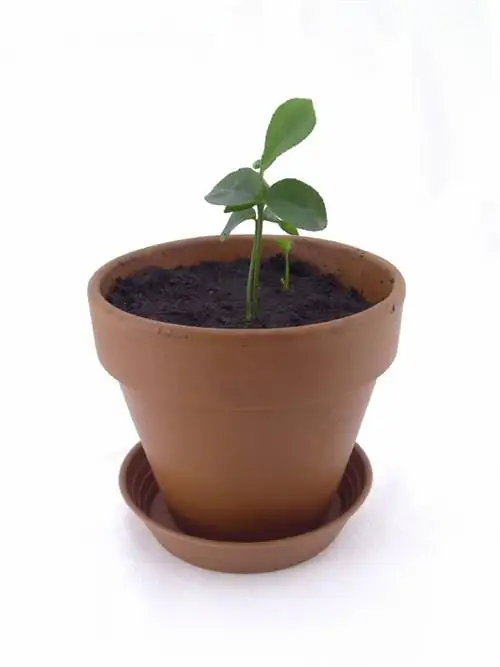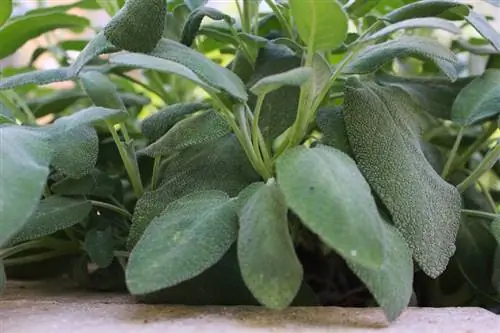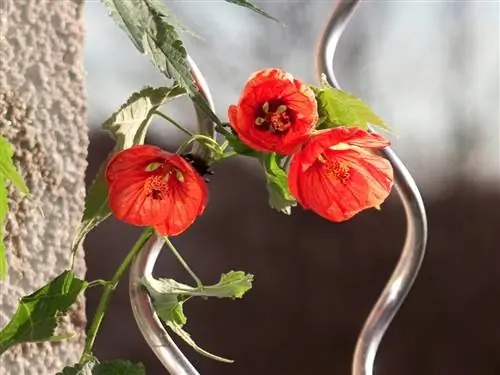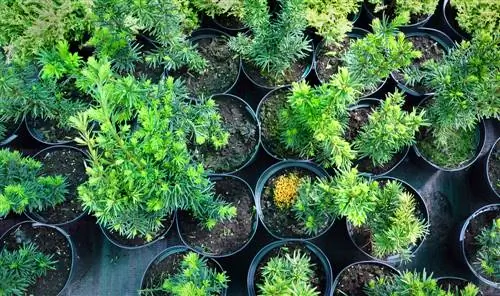- Author admin [email protected].
- Public 2023-12-16 16:46.
- Last modified 2025-01-23 11:20.
Many hobby gardeners would like to propagate their plants themselves, and this often also applies to houseplants. Not every plant is as easy to propagate as the easy-care rubber tree. Various methods are available here.

How to propagate a rubber tree?
A rubber tree can be propagated by sowing, cuttings and moss. The simplest method is propagation by cuttings, in which a he althy shoot is cut and placed in water until roots appear. Removal of moss leads to larger young plants, but is more complex.
Can a rubber tree be grown from seeds?
The rubber tree (lat. Ficus elastica) is quite easy to grow from seeds. However, sowing is only worthwhile if you really want to have a lot of young plants. Scatter the seeds on normal growing or potting soil, which may well be low in nutrients. Cover the seeds with some soil and moisten them slightly.
To keep the moisture in, use an indoor greenhouse (€24.00 on Amazon) or pull a transparent film over the growing pots. Uniform moisture is important, but waterlogging should definitely be avoided. The seeds germinate after just a short time. Once the first leaves have formed, you can repot your young rubber trees.
Is propagation from cuttings easy?
Setting cuttings is considered the easiest way to propagate the rubber tree. The best time for this is spring, when new shoots are forming. Find a strong, he althy shoot with at least one leaf and one bud. Cut it at least 6 cm long and place it in a glass with water. This allows the milky juice to drain away easily.
Then plant the shoot in a pot with peat soil and place it in an indoor greenhouse (€24.00 on Amazon) or put a transparent plastic bag over it. The offshoot should now be allowed to grow in a bright place for at least three months. Then slowly get him used to normal room air.
Pruning a rubber tree that is too large
If your rubber tree is too big for you, you can simply cut it to the desired length. You can now use the cut piece for propagation by planting it like a cutting in nutrient-poor soil.
Cut your rubber tree at the beginning of the growing season, then it will sprout again at the so-called sleeping eyes. It is best to cut just above such an eye. This will give your rubber tree a nice shape.
The moss removal
Although it is relatively time-consuming, you get quite attractive young plants when you remove the moss. It takes a few months until sufficient roots have formed at the interface. You should really follow the instructions and not separate the young plant from the mother plant too early.
The most important things in brief:
- Sowing possible, but brings many new plants
- Removal of moss is time-consuming, but produces larger young plants
- Easiest way of propagation: cuttings
Tip
Depending on your preferences and goals, there are various options for propagation available to you, from sowing to the very simple planting of cuttings to the very complex removal of moss.






